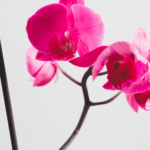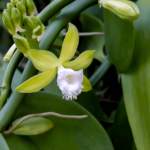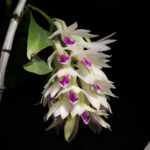The encyclia orchids are a genus of the Orchidaceae family, with 165 cataloged species.
They were proposed by Hooker in 1828, usually they are epiphytic orchids and, less frequently, rupicolous.
They are native to America, and their places of origin include:
- Brazil
- Argentina
- Mexico
- United States
- Central America (mainly the Caribbean)
A curiosity
Formerly, they were considered epidendrum orchids.
But due to the difference between their lips and pseudobulbs, the two genera were separated.
Basically, the lips of the encyclia are loose while those of the epidendrum are fused, and the encyclia has pseudobulbs, whereas the epidendrum does not.
Continue reading this article to learn more about encyclia orchids, how to care for them, their curiosities, among other things.
Learn How to Achieve Super Blooms on Your Orchids
🛑 If you love orchids and you're tired of not being able to make them bloom...
Then, know that thousands of beginner growers are achieving beautiful flowers on their orchids by following this method.
Click the button below to have beautiful orchids with show-worthy flowers every year. ⤵
Characteristics of Encyclia Orchids
First, let’s focus on the characteristics and some curiosities about the encyclia genus.
Encyclias can vary greatly in size.
- There are species with a maximum size of a few centimeters
- While others nearly reach a meter in height.
Additionally, their leaves can have two different shapes:
- Leathery,
texture similar to leather and easily breaks
- Lanceolate, according to the informal dictionary:
said of an organ that ends in the shape of a spear: lanceolate leaf.
As for their multiplication, the division of pseudobulbs is commonly used, where the plant is divided into two or more parts, to form new plants.
Viridiflora was found by Willian Harrison and cataloged by Hooker.
Harrison claims to have seen it in Rio de Janeiro, but it was never seen again.
It was thanks to this species that this genus came into existence.
NOTE: the original drawing of viridiflora is as follows:
Flowers
One of the most attractive characteristics of this genus is its flowers.
This is because unlike brassavola orchids, encyclias have almost all their species with fragrant flowers.
This pleasant smell serves to attract:
- Bees
- Birds
All to pollinate the flowers.
Another factor that encyclia uses to attract its pollinators is the beautiful colors of its flowers, which can be:
- Yellow
- Pink
- Brown
- White
- Among various other colors
As for the duration of their flowers, it is usually one month.
But this is not a fixed value, because, depending on the health of your plant, this period can increase or decrease.
Now let’s learn more about how to cultivate this wonderful orchid.
Encyclia Care
The cultivation of encyclia orchids is quite simple to do.
You don’t have to worry too much about various factors, as probably the most difficult will be watering, which is still quite easy to do.
Basically, orchid cultivation can be divided into several parts:
- Planting
- Watering
- Substrates
- Lighting and temperature
- Among others
Moreover, each species has its preference, see an example:
- Regarding watering, the vanda orchid likes to be watered several times a week
- While dendrobium orchids prefer to be watered less frequently.
Below I will cover the main factors of encyclia orchid cultivation, so you can easily cultivate your orchid.
Brightness
This is an orchid that likes high brightness.
To check if your orchid is receiving too much sun, look at its leaves.
- If the leaf is darker than normal, then it is getting too little sun. This is because it increased chlorophyll production to capture more sunlight.
- If the leaf is yellowing or burned, it is receiving too much sun.
A good tip is to place this orchid with the cattleyas, as their lighting needs are very similar.
Ventilation
Ideal ventilation will ensure that your orchid does not catch diseases.
With good ventilation, the encyclia can withstand higher temperatures, but be careful, this also depends on humidity.
So that you don’t worry too much about this factor:
- Ensure your orchid is placed where the air is not stagnant or too strong.
Usually, a breeze is ideal.
How to Water Encyclia Orchid
Now, the factor I consider most laborious about caring for encyclia orchids, watering.
This is because the watering needs of species in this genus vary widely.
- Encyclias native to South America do not require very frequent watering
- Those native to Central America need to be watered frequently.
So, to figure out how to water your encyclia orchid, you’ll take a pencil and sharpen it, leaving it as shown in the image below:
After that, insert it into the middle of your orchid’s substrate; if it comes back a different color (wet), wait, it’s not time to water yet.
But if it comes back dry, it means the substrate has dried out, and it’s time to water your orchid.
In the beginning, check the substrate daily.
Over time, you can create a “watering calendar” as you’ll have a good idea of how often your orchid needs to be watered.
NOTE: during the growth period, your orchid needs more frequent watering.
Fertilization
In nature, orchids do not receive fertilizer.
But they have various nutrients available, present in organic compounds in the forests.
In order to provide these same nutrients to our orchids, we need to use fertilizers.
There are two types of fertilizers used in orchids:
- Chemical: made by humans
- Organic: made by nature
Applying organic fertilizers is very easy.
If you make a mistake with the dosage, there is not much danger, but they take a long time to take effect.
Now, if you apply chemical fertilizer incorrectly, you’ll have problems with your orchids.
The advantage of chemical fertilizers is that they produce better and faster results most of the time.
To apply chemical fertilizers to your encyclia orchid, follow the steps below:
- Use a balanced fertilizer: such as NPK 20-20-20 or NPK 10-10-10.
- Fertilize at the right time: on average, every 7 days during the growth phase and every 15 or 30 days during other periods.
Always be careful not to overdo the amount of fertilizer applied; if necessary, use half the recommended amount.
In other words, if the recommended dose is 1 tablespoon of fertilizer per liter of water, use 1 tablespoon for every 2 liters of water.
Do You Want to Learn How To Keep Your Orchids Healthy And Ready to Bloom Every Year?
So, I prepared a complete guide, step by step and illustrated, that will show you:
• The secrets to getting beautiful flowers every year
• How to fight and identify pests and diseases on your orchids
• THE MAGIC SUBSTANCE for orchids and how to use it
• And much, much more.
The great news is that the manual is now available at a super discount!!
But beware, it's only for the first buyers.
Click on MORE INFORMATION below and discover the secrets to show-worthy flowers. 👇
Temperature
Ideal temperature is also another very important factor when it comes to cultivating your orchids.
It is especially important for your orchid to bloom.
- The ideal for your encyclias is 21ºC to 29ºC (70°F to 84°F) during the day.
- And to stimulate flowering, 10ºC to 15ºC (50°F to 59°F) at night.
Temperatures that are too low or too high for a long period can end up damaging your plant, causing it to:
- Not bloom
- Stop growing
Returning to normal only after 1 or 2 years.
Humidity
Good humidity prevents your orchid from getting diseases.
Contrary to what many believe, humidity is not only related to the air.
Basically, if you water your orchid and allow water to accumulate at the bottom of the pot, the humidity will be too high for your orchid.
So, before worrying about the air humidity, check if you are not allowing water to accumulate at the bottom of your orchids’ pots.
Or in some small pots below the pot where your encyclia orchid is.
After checking this, just verify if the humidity is between 50% and 80%, as it is ideal for encyclia.
Repotting
Like the vast majority of orchids, encyclia also needs to be repoted from time to time.
This can happen due to:
- Substrates that are becoming old
- Size of the plant
- Diseases
You will probably have to repot it every 2 or 3 years.
And when you do that, do it after the flowering has occurred.
Because repotting causes your orchid to spend a lot of energy adapting to the new environment.
To repot, watch the video below, but first follow these 3 steps:
- Water your orchid, wet it well, so it loosens more easily from the pot.
- Squeeze the pot (if it is plastic) to compress the soil; this will also make it easier to remove your orchid.
- Remove your orchid, clean it, and also remove all dead roots, being very careful.
Where to Plant It
There are several places where you can plant it; here are some of the best places:
- Plastic pots
- Clay pot
- Large pieces of wood
Soil
Regarding substrates, the most recommended ones are those that ensure good drainage for your orchid, especially at the bottom of the pot.
- Lava rock
- Fern pieces
- Charcoal
- Gravel
- Pine bark
But also include some substrates that retain a little moisture like sphagnum.
Just choose a few and give them a try.
Main Species of Encyclia
This is a very large genus.
There are several species of encyclia, many of which are interesting to have at home and cultivate.
But before we continue.
Now see below the main species of encyclias and their characteristics:
Encyclia patens
One of the first species of this genus to be described.
Encylcia patens is a Brazilian orchid, discovered in 1828 by Hooker.
It is an epiphytic orchid that can be found mainly in the forests from Rio Grande do Sul to Bahia.
During its flowering, it produces dozens of flowers, each about 1.5 cm (0.59 inch) long on average.
It blooms in spring, and its flowers have a very delicate perfume.
Encyclia Dichroma
It is an epiphytic orchid, but can sometimes be rupicolous or terrestrial.
It is usually found at altitudes of up to 600 meters (1968.5 feet).
Native to northeastern Brazil, encyclia dichroma is mainly found in Bahia, Sergipe, and Pernambuco.
It usually flowers in autumn.
And it produces 8 to 15 flowers, each about 2 to 4 centimeters (0.78 to 1.57 inch) in size.
To cultivate them, follow the tips below:
- Place them on bark or tree trunks
- Medium / low humidity
- Likes plenty of indirect light
- Cultivate them between 10°C and 35°C (50°F to 95°F)
- Make sure water does not accumulate on its roots.
If you liked this article, share it on your social networks by clicking on the icons below:



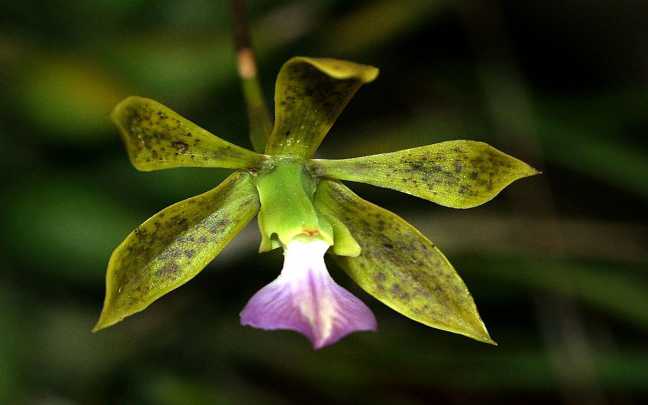
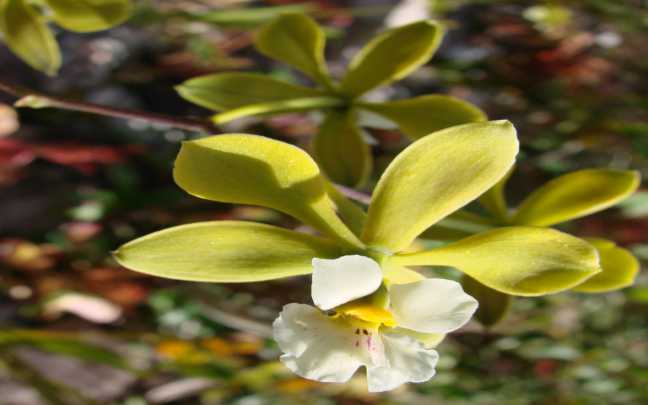

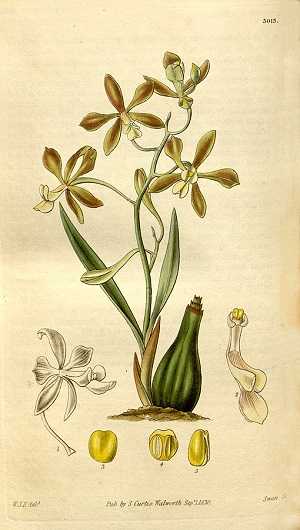


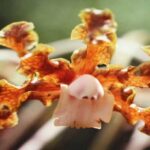

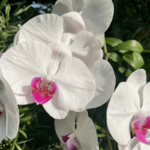
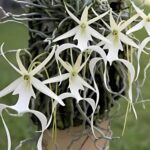
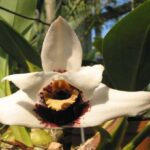

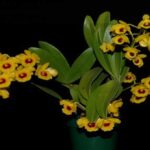
![How to Make an Orchid Bloom – featured image How to Make an Orchid Bloom [Beginner's Guide]](https://planticulous.com/wp-content/uploads/2023/10/How-to-Make-an-Orchid-Bloom-featured-image-150x150.jpeg)
